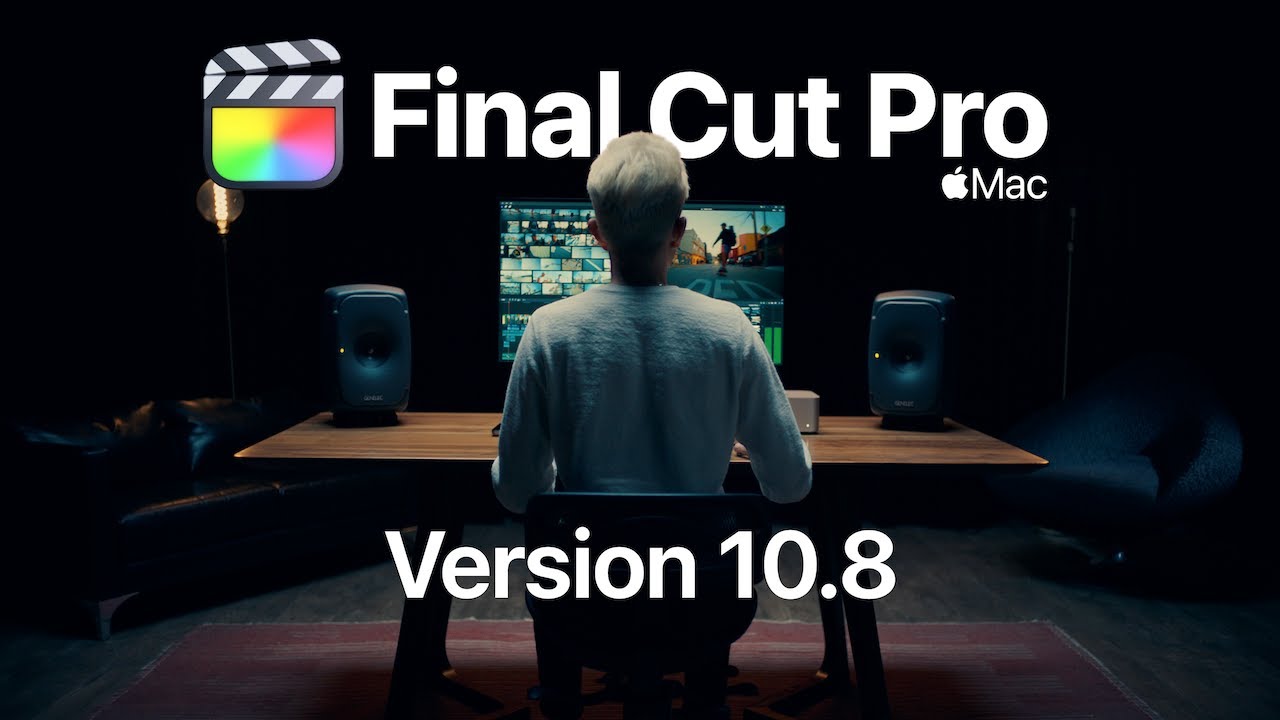[13:57 Mon,17.June 2024 by Rob] |
With the Nikon Z6III, Nikon is expanding its full-frame DSLM portfolio with exciting new functions - especially for filmmakers - and is also giving the "new one" the currently highest-resolution viewfinder system of all Nikon DSLMs. The centrepiece of the new Nikon Z6III is its 24.5 MP sensor, which has been developed for the first time in a "partially stacked" design.  Nikon Z6III and new MB-N14 Partially Stacked Sensor We already had a brief hands-on with the new Nikon Z6III and naturally asked Nikon about the new sensor design. There isn&t much information about the new sensor yet, but we have seen a construction image in which you can recognise stacked areas at the top and bottom of the sensor. 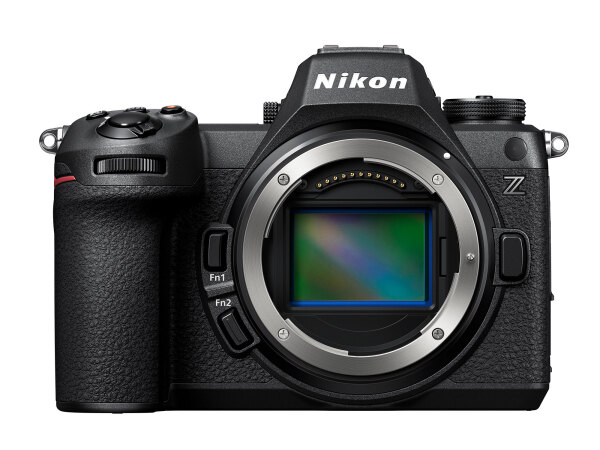 Nikon Z6III with partially stacked sensor The partially stacked design should also enable speed advantages in readout compared to non-stacked sensors without driving up the costs as with fully stacked sensors (Nikon Z8/Z9). Accordingly, we are already looking forward to our test lab evaluation of the Nikon Z6III ... internal 6K 50/60p N-RAW Recording One of the highlights for filmmakers is likely to be the internal 6K 50/60p Nikon 12-bit N-RAW recording. Nikon is thus continuing the remarkable RAW performance of the Nikon Z8/Z9 on the 24.5 MP sensor of the new Nikon Z6III and creating a new unique selling point in the DSLM mid-range for filmmakers. We are currently unaware of any other mid-range full-frame DSLM that is capable of recording 12-bit 6K RAW at 50/60p internally. The Nikon Z6III provides a CFexpress card slot for the more data rate-intensive formats. And the options for high-quality video formats are also numerous with the Nikon Z6III: 5.7MP EVF and Display With the Nikon Z6III, Nikon is also introducing a new OLED viewfinder, which with 5.76 million pixels (UXGA) is currently the highest-resolution viewfinder of all NIKON DSLMs.  The 0.5" viewfinder (1.27 cm) also offers DCI P3 colour space coverage for the first time with a brightness of 4,000 cd/m². In this context, Nikon refers to an improved monitoring function with which demanding image details and colours can be better assessed. For comparison: the viewfinder systems of the Nikon Z8/Z9 both have a resolution of 3.69 MP. This means that the Nikon Z6III outperforms the Nikon full-frame models. The frame rate of the Z6III viewfinder is 60 fps. Also important for videographers: the Nikon Z6III now has a tilting and rotating monitor (touchscreen) with an 8cm screen diagonal and a resolution of 2.1 MP and therefore technically the same flip-up monitor as the Nikon Z8. The monitor, which can be folded out to the side, should be of particular benefit to videographers - in our view a welcome innovation in the Z6 line-up... Dual Cardslots CFexpress, SD-Card As with the Nikon Z8, the Nikon Z6III has two card slots. 1 CFexpress card slot (incl. XQD compatibility) and 1 UHS-II SD card slot. The data rate-intensive RAW and ProRes formats should therefore be reserved primarily for the CFexpress slot. 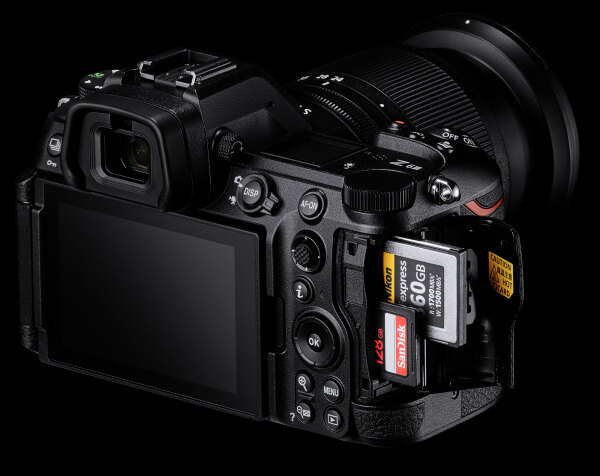 H.265 and H.264 should be accommodated on the SD card. We have not yet been able to find out whether the Nikon Z6III also supports proxy recording like its big sisters. Sealed housing (without fan) The body design of the Nikon Z6 III is in some ways a mixture of the Nikon Z6II and Nikon Z8. In terms of size, it lies between the Nikon Z6II and Nikon Z8. In terms of the switch and monitor layout on the back, it clearly follows the more modern Nikon Z8. The switch layout on the back is virtually the same as on the Nikon Z8, including the play button at the bottom right. 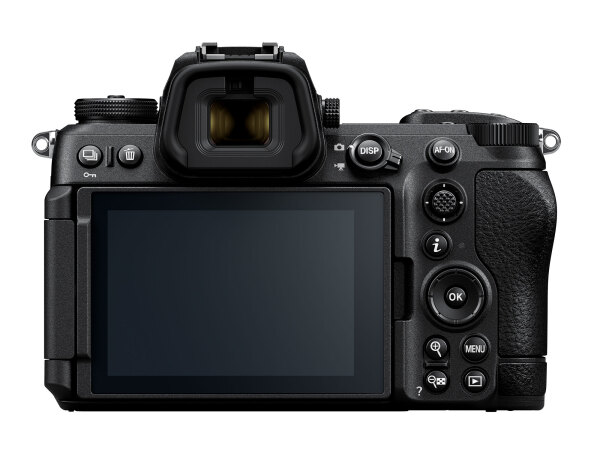 The mode dial on the top, on the other hand, is more similar to the Nikon Z6II mode dial. The body dimensions of the Nikon Z6III are 138.5 x 101.5 x 74 mm with a weight of 670 g (760 g with battery and memory card). The Nikon Z6III has improved in terms of operating conditions. Like the Z8/Z9, it is now designed by Nikon for a temperature range of -10 degrees Celcius and comes with a multi-sealed, fanless housing. Initial tests should show the extent to which this affects the thermal behaviour. Line-In Audio For the first time, the audio mini jack of the Nikon Z6III can also be switched to line-in. This means that anyone receiving line-in levels from a mixer or other external players, for example, will now be able to process them in the Nikon Z6III without any problems. IBIS Nikon claims up to 8 f-stops of stabilisation performance for the Z6III thanks to the combination of 5-axis sensor and E-VR stabilisation. This is significantly more than the Nikon Z8/Z9. This means that the Nikon Z6III is likely to use the new stabilisation algorithms of the Nikon Zf, which also has 8 stops. Also known from the Nikon Zf is the so-called focus area VR, in which the image content is stabilised around the respective active focus area. Autofocus The Nikon Z6III&s autofocus system also appears to have improved its low-light performance compared to the Nikon Z8/Z9. Nikon states a value of up to -10 EV here. The phase-hybrid AF of the Nikon Z6III has 273 AF points again (and thus fewer than the AF systems of the Nikon Z8/Z9 (493 points)). Timecode Sync via Ultrasync BLUE Another interesting function for filmmakers: Like the Nikon Z8/Z9, the Nikon Z6III also supports ATOMOS AirGlu BT technology, which allows timecode to be embedded in the respective media file via UltraSync BLUE Transmitter. So if you mainly record audio externally or are travelling with multi-camera setups, you will find a cost-effective timecode sync solution here. Fullsize HDMI and In/Outs In addition to the already mentioned 3.5mm mini-jack for micro and line-in, the Nikon Z6III now also has a full-size HDMI output (type A) - for many film makers certainly the better option than the previously installed HDMI type C connection. 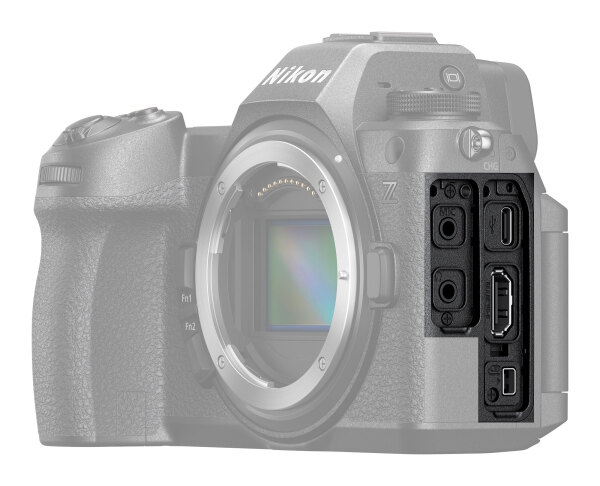 In addition, there is a USB-C interface which, according to our information, also allows the battery (EN-EL15c) to be charged, a headphone connection and a Nikon accessory connection (e.g. for MC-DC2 and other components). Price and availability The Nikon Z6III is expected to be available in stores at the end of June 2024. Nikon Z6III body = 2.999,00 Euro (RRP.) Nikon Z6III Kit Z 24-70 mm f/4 S = 3.629,00 Euro (RRP.) Nikon Z6III Kit Z 24-120 mm f/4 S = 3.949,00 Euro (RRP.) Nikon Z6III Kit Z 24-200 mm f/4-6.3 VR = 3.839,00 Euro (RRP.) deutsche Version dieser Seite: Nikon Z6III vorgestellt: Partially Stacked 24.5 MP Sensor, internes 6K RAW 60p, 5.7 MP EVF... |





